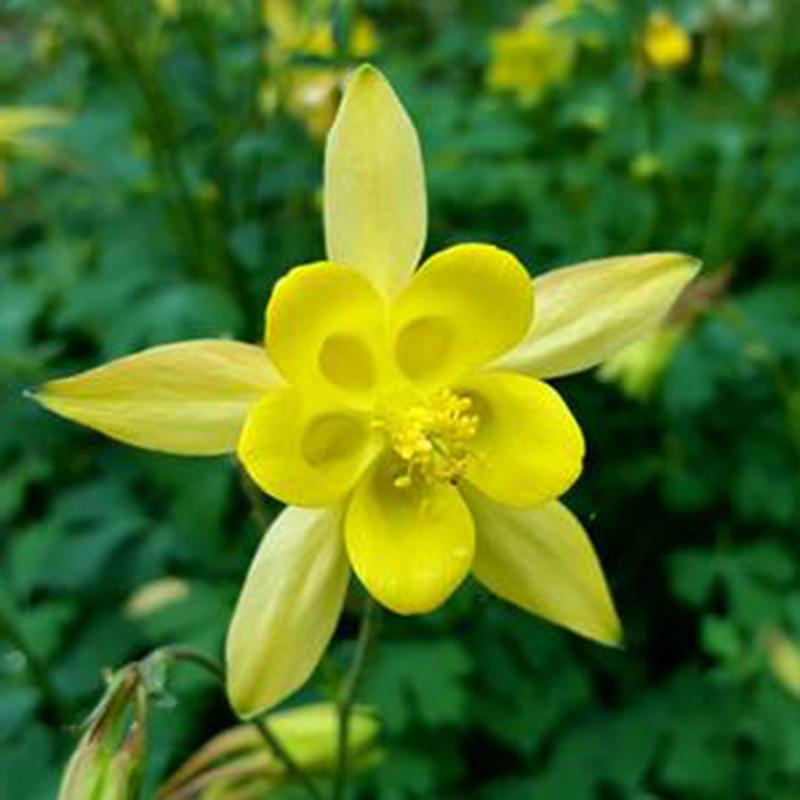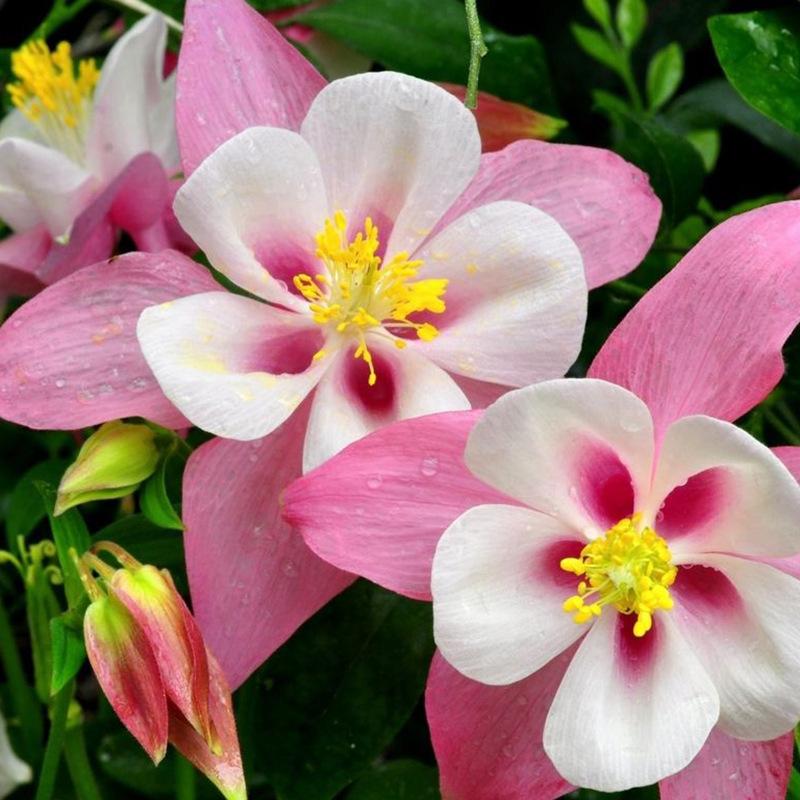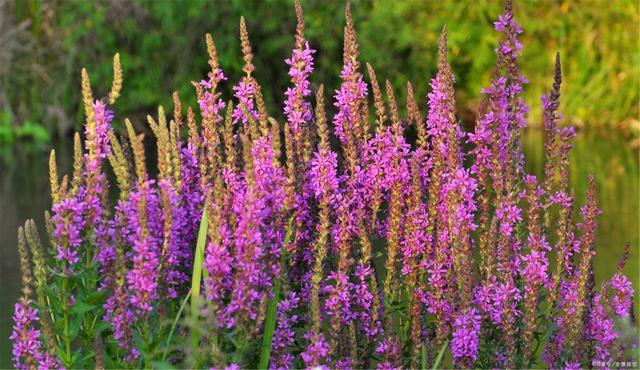Cactaceae, also known as cacti, have an interesting origin story. It is believed that they first evolved around 30 million years ago in North and South America, but their distinctive feature, spines, didn’t emerge until much later. The spines evolved as a way for cacti to protect themselves from herbivores and to conserve moisture in their arid environments. Some cacti have even developed unique relationships with animals, such as bats, who help pollinate their flowers. Today, the diverse family of cacti continues to fascinate botanists and nature lovers alike with their striking forms and ability to thrive in harsh environments.
Picture
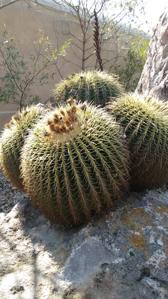
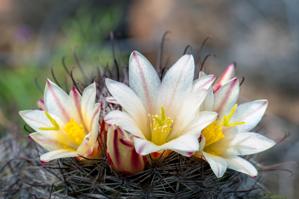
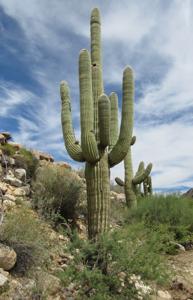
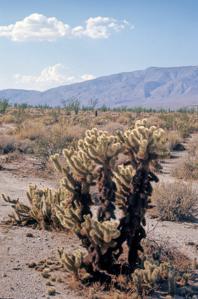
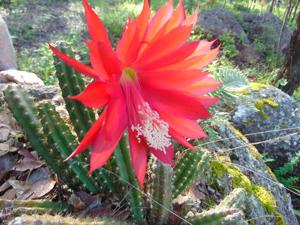
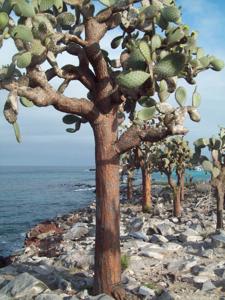
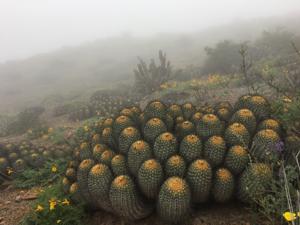
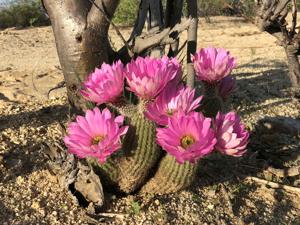
Plant some seeds now!
Short Description
Cultivated cacti in the Singapore Botanic Gardens
Many species of cactus have long, sharp spines, like this Opuntia.
A cactus (pl.: cacti, cactuses, or less commonly, cactus) is a member of the plant family Cactaceae (/kæˈkteɪsiaɪ, -siːiː/),[a] a family comprising about 127 genera with some 1,750 known species of the order Caryophyllales. The word cactus derives, through Latin, from the Ancient Greek word κάκτος (káktos), a name originally used by Theophrastus for a spiny plant whose identity is now not certain. Cacti occur in a wide range of shapes and sizes. They are native to the Americas, ranging from Patagonia in the south to parts of western Canada in the north, with the exception of Rhipsalis baccifera, which is also found in Africa and Sri Lanka. Cacti are adapted to live in very dry environments, including the Atacama Desert, one of the driest places on Earth. Because of this, cacti show many adaptations to conserve water. For example, almost all cacti are succulents, meaning they have thickened, fleshy parts adapted to store water. Unlike many other succulents, the stem is the only part of most cacti where this vital process takes place. Most species of cacti have lost true leaves, retaining only spines, which are highly modified leaves. As well as defending against herbivores, spines help prevent water loss by reducing air flow close to the cactus and providing some shade. In the absence of true leaves, cacti’s enlarged stems carry out photosynthesis.
Cactus spines are produced from specialized structures called areoles, a kind of highly reduced branch. Areoles are an identifying feature of cacti. As well as spines, areoles give rise to flowers, which are usually tubular and multipetaled. Many cacti have short growing seasons and long dormancies and are able to react quickly to any rainfall, helped by an extensive but relatively shallow root system that quickly absorbs any water reaching the ground surface. Cactus stems are often ribbed or fluted with a number of ribs which corresponds to a number in the Fibonacci numbers (2, 3, 5, 8, 13, 21, 34 etc.). This allows them to expand and contract easily for quick water absorption after rain, followed by retention over long drought periods. Like other succulent plants, most cacti employ a special mechanism called “crassulacean acid metabolism” (CAM) as part of photosynthesis. Transpiration, during which carbon dioxide enters the plant and water escapes, does not take place during the day at the same time as photosynthesis, but instead occurs at night. The plant stores the carbon dioxide it takes in as malic acid, retaining it until daylight returns, and only then using it in photosynthesis. Because transpiration takes place during the cooler, more humid night hours, water loss is significantly reduced.
Many smaller cacti have globe-shaped stems, combining the highest possible volume for water storage with the lowest possible surface area for water loss from transpiration. The tallest[b] free-standing cactus is Pachycereus pringlei, with a maximum recorded height of 19.2 m (63 ft), and the smallest is Blossfeldia liliputiana, only about 1 cm (0.4 in) in diameter at maturity. A fully grown saguaro (Carnegiea gigantea) is said to be able to absorb as much as 200 U.S. gallons (760 L; 170 imp gal) of water during a rainstorm. A few species differ significantly in appearance from most of the family. At least superficially, plants of the genera Leuenbergeria, Rhodocactus and Pereskia resemble other trees and shrubs growing around them. They have persistent leaves, and when older, bark-covered stems. Their areoles identify them as cacti, and in spite of their appearance, they, too, have many adaptations for water conservation. Leuenbergeria is considered close to the ancestral species from which all cacti evolved. In tropical regions, other cacti grow as forest climbers and epiphytes (plants that grow on trees). Their stems are typically flattened, almost leaf-like in appearance, with fewer or even no spines, such as the well-known Christmas cactus or Thanksgiving cactus (in the genus Schlumbergera).
Cacti have a variety of uses: many species are used as ornamental plants, others are grown for fodder or forage, and others for food (particularly their fruit). Cochineal is the product of an insect that lives on some cacti.
Many succulent plants in both the Old and New World – such as some Euphorbiaceae (euphorbias) – are also spiny stem succulents and because of this are sometimes incorrectly referred to as “cactus”.[citation needed]
Cultivation
Cultivated Notocactus warasii at the San Diego County Fair, California
The popularity of cacti means many books are devoted to their cultivation. Cacti naturally occur in a wide range of habitats and are then grown in many countries with different climates, so precisely replicating the conditions in which a species normally grows is usually not practical. A broad distinction can be made between semidesert cacti and epiphytic cacti, which need different conditions and are best grown separately. This section is primarily concerned with the cultivation of semidesert cacti in containers and under protection, such as in a greenhouse or in the home, rather than cultivation outside in the ground in those climates that permit it. For the cultivation of epiphytic cacti, see Cultivation of Schlumbergera (Christmas or Thanksgiving cacti), and Cultivation of epiphyllum hybrids.
Growing medium
Cacti in a greenhouse in Darjeeling, India
The purpose of the growing medium is to provide support and to store water, oxygen and dissolved minerals to feed the plant. In the case of cacti, there is general agreement that an open medium with a high air content is important. When cacti are grown in containers, recommendations as to how this should be achieved vary greatly; Miles Anderson says that if asked to describe a perfect growing medium, “ten growers would give 20 different answers”. Roger Brown suggests a mixture of two parts commercial soilless growing medium, one part hydroponic clay and one part coarse pumice or perlite, with the addition of soil from earthworm castings. The general recommendation of 25–75% organic-based material, the rest being inorganic such as pumice, perlite or grit, is supported by other sources. However, the use of organic material is rejected altogether by others; Hecht says that cacti (other than epiphytes) “want soil that is low in or free of humus”, and recommends coarse sand as the basis of a growing medium.
Watering
Semi-desert cacti need careful watering. General advice is hard to give, since the frequency of watering required depends on where the cacti are being grown, the nature of the growing medium, and the original habitat of the cacti. Brown says that more cacti are lost through the “untimely application of water than for any other reason” and that even during the dormant winter season, cacti need some water. Other sources say that water can be withheld during winter (November to March in the Northern Hemisphere). Another issue is the hardness of the water; where it is necessary to use hard water, regular re-potting is recommended to avoid the build up of salts. The general advice given is that during the growing season, cacti should be allowed to dry out between thorough waterings. A water meter can help in determining when the soil is dry.
Light and temperature
Although semi-desert cacti may be exposed to high light levels in the wild, they may still need some shading when subjected to the higher light levels and temperatures of a greenhouse in summer. Allowing the temperature to rise above 32 °C (90 °F) is not recommended. The minimum winter temperature required depends very much on the species of cactus involved. For a mixed collection, a minimum temperature of between 5 °C (41 °F) and 10 °C (50 °F) is often suggested, except for cold-sensitive genera such as Melocactus and Discocactus. Some cacti, particularly those from the high Andes, are fully frost-hardy when kept dry (e.g. Rebutia minuscula survives temperatures down to −9 °C (16 °F) in cultivation) and may flower better when exposed to a period of cold.
Propagation
Cacti can be propagated by seed, cuttings or grafting. Seed sown early in the year produces seedlings that benefit from a longer growing period. Seed is sown in a moist growing medium and then kept in a covered environment, until 7–10 days after germination, to avoid drying out. A very wet growing medium can cause both seeds and seedlings to rot. A temperature range of 18–30 °C (64–86 °F) is suggested for germination; soil temperatures of around 22 °C (72 °F) promote the best root growth. Low light levels are sufficient during germination, but afterwards semi-desert cacti need higher light levels to produce strong growth, although acclimatization is needed to conditions in a greenhouse, such as higher temperatures and strong sunlight.
Grafted forms of Gymnocalycium mihanovichii grown in Israel
Reproduction by cuttings makes use of parts of a plant that can grow roots. Some cacti produce “pads” or “joints” that can be detached or cleanly cut off. Other cacti produce offsets that can be removed. Otherwise, stem cuttings can be made, ideally from relatively new growth. It is recommended that any cut surfaces be allowed to dry for a period of several days to several weeks until a callus forms over the cut surface. Rooting can then take place in an appropriate growing medium at a temperature of around 22 °C (72 °F).
Grafting is used for species difficult to grow well in cultivation or that cannot grow independently, such as some chlorophyll-free forms with white, yellow or red bodies, or some forms that show abnormal growth (e.g., cristate or monstrose forms). For the host plant (the stock), growers choose one that grows strongly in cultivation and is compatible with the plant to be propagated: the scion. The grower makes cuts on both stock and scion and joins the two, binding them together while they unite. Various kinds of graft are used—flat grafts, where both scion and stock are of similar diameters, and cleft grafts, where a smaller scion is inserted into a cleft made in the stock.
Commercially, huge numbers of cacti are produced annually. For example, in 2002 in Korea alone, 49 million plants were propagated, with a value of almost US$9 million. Most of them (31 million plants) were propagated by grafting.
Pests and diseases
A range of pests attack cacti in cultivation. Those that feed on sap include mealybugs, living on both stems and roots; scale insects, generally only found on stems; whiteflies, which are said to be an “infrequent” pest of cacti; red spider mites, which are very small but can occur in large numbers, constructing a fine web around themselves and badly marking the cactus via their sap sucking, even if they do not kill it; and thrips, which particularly attack flowers. Some of these pests are resistant to many insecticides, although there are biological controls available. Roots of cacti can be eaten by the larvae of sciarid flies and fungus gnats. Slugs and snails also eat cacti.
Fungi, bacteria and viruses attack cacti, the first two particularly when plants are over-watered. Fusarium rot can gain entry through a wound and cause rotting accompanied by red-violet mold. “Helminosporium rot” is caused by Bipolaris cactivora (syn. Helminosporium cactivorum); Phytophthora species also cause similar rotting in cacti. Fungicides may be of limited value in combating these diseases. Several viruses have been found in cacti, including cactus virus X. These appear to cause only limited visible symptoms, such as chlorotic (pale green) spots and mosaic effects (streaks and patches of paler color). However, in an Agave species, cactus virus X has been shown to reduce growth, particularly when the roots are dry. There are no treatments for virus diseases.

